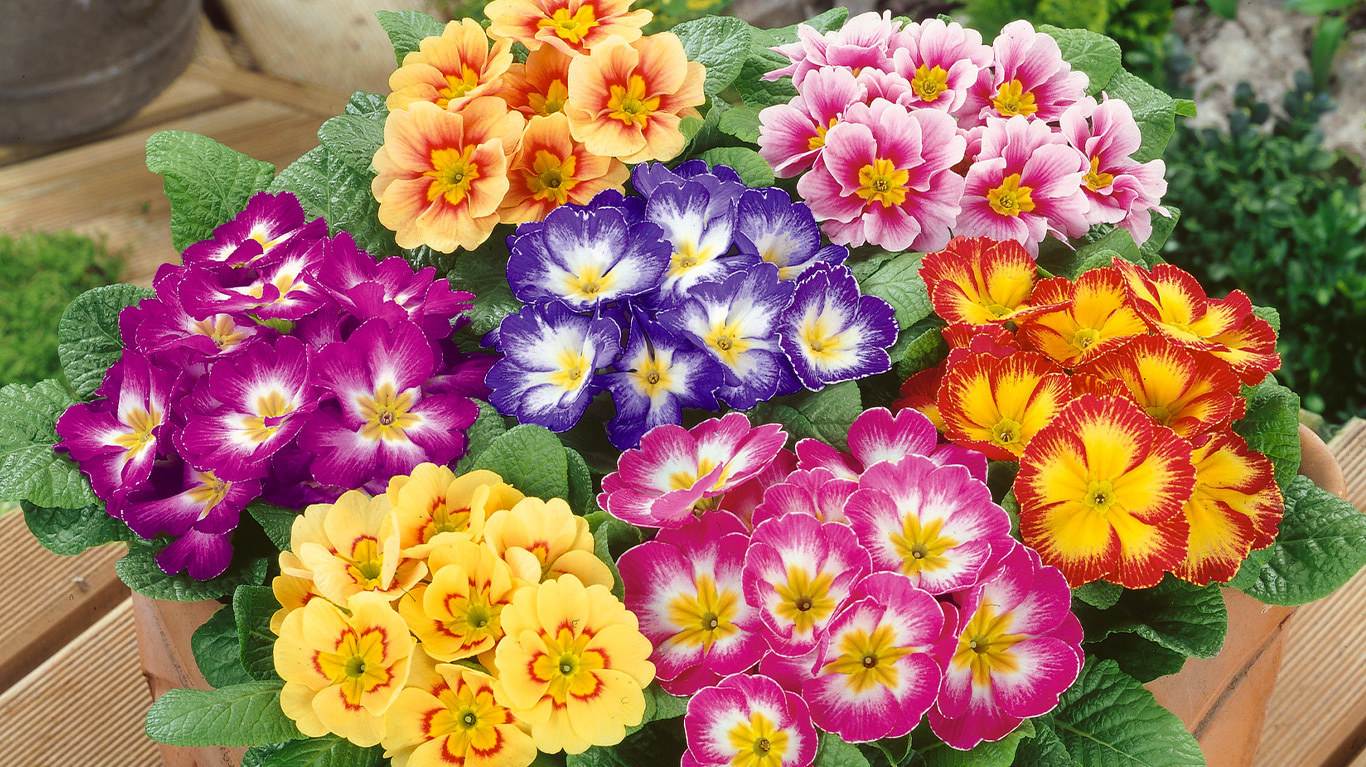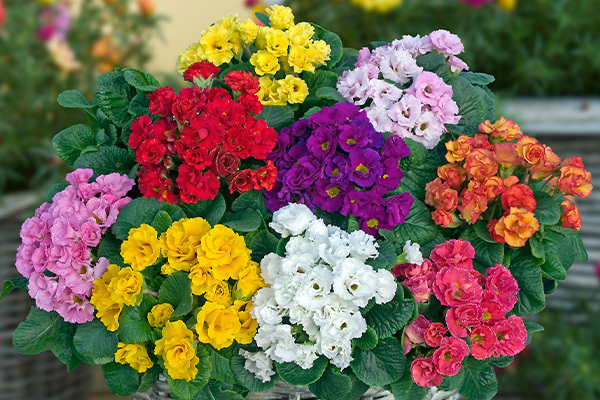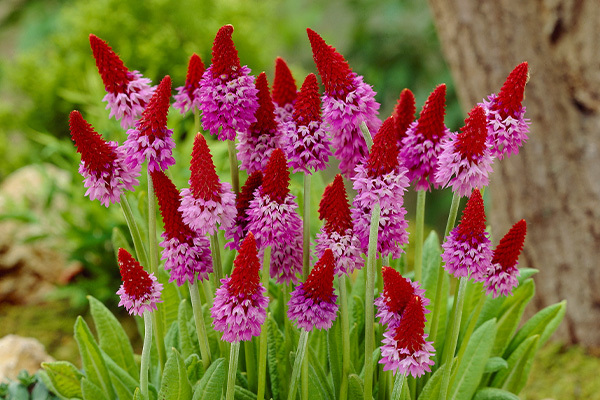
What We've Included
When to Plant | How to Plant | Where to Plant | Feeding | When to Water | Deadheading | Dividing Primulas | Common Issues & How to Solve Them | When do they Flower? | Primula to Know & Grow
When to Plant
Primulas are best planted in spring or autumn, where temperatures are cool, and the soil is moist.

How to Plant
Planting Primula Modules & Pots
Our modules and pots are incredibly easy to plant and maintain. Whether you’re growing them directly outside into the border or in a container or keeping them indoors over winter, our modules are a breeze to care for from the moment they arrive.
- Dig a hole in the border that’s big enough to house the entire module. If planting in pots, fill a large pot halfway with potting soil and then make several holes that can hold the modules. Do this until the top of the soil from the module is just below the top of the pot.
- Fill around the modules with soil and firm them down gently.
- Water well and you’re done!
Where to Plant
Make sure you plant your primulas somewhere partially shaded, and they’re in moisture-retentive soil. Many primulas prefer a shady spot, but some can tolerate direct rays.
Feeding Primula
Native primroses and cowslips need little attention to keep flowering. However, other varieties can flower in abundance for longer and need extra help to do so. As soon as you see their first buds appear, feed them with diluted tomato feed once every ten days until the flowers open.

When to Water
Water well after planting and continue to water regularly – especially in periods of intense heat. Reduce watering in the tail end of summer/beginning of autumn.
Deadheading
If left after their flowers are spent, primulas will self-seed. This allows them to reappear the following year, giving you a bigger display!
However, if you would rather them be an annual only, deadhead spent flowers.
Dividing Primulas
Primulas and primroses will need dividing every couple of years, or once they’re heavily congested. As they self-seed, they will grow in numbers, and without any intervention, they can get out of hand. Many flowering issues can arise when plants get overly congested, so it’s in your best interest to divide them when you notice this happening.
To do this, simply lift the plants out of the ground, divide them into halves and plant them further apart in the garden.

Common Issues & How to Solve Them
Primulas aren’t often bothered by pests or diseases. However, keep an eye out for primula leaf spot. This appears with spots in yellow/orange colours. Under the leaves can also hide white fungal growth. Pick off any affected leaves once you notice this to mitigate the problem.
When do they Flower?
Most primulas will flower between March and May. This may differ depending on the type you have purchased but do be extra sure, you can see their flowering months on their online product pages.

Primulas to Know to Grow
There are many different types of primula, from small and delicate flowers to large and robust plants. The most common type is primrose, which is often found in gardens and meadows. Other types of primula include the cowslip, the Scottish primrose, and the autumn primrose.
'Red Hot Poker Primula' - Primula vialii
Primula vialii, commonly known as the red-hot poker, is a species of primula that is native to the eastern Mediterranean region. It is a perennial herb that produces tall spikes of tubular, red flowers in late winter or early spring. The flowers are attractive to bees and other pollinators, and the plant can be used in gardens or landscaping.
Primula allionii (Allioni's Primrose)
Allioni's primrose is a small, herbaceous perennial plant that is native to Italy. It has basal leaves and produces one or more flowering stems that are typically 10-20 cm tall. The flowers are typically 3-5 cm in diameter and are typically purple, blue, or white in colour.
Primula capitata (Round-Headed Himalayan Primrose)
Round-headed Himalayan primrose (Primula capitata) is a small, herbaceous perennial plant that is native to the Himalayas. The plant has round, green leaves and small, purple flowers. Round-headed Himalayan primrose grows best in moist, shady areas and can be used as a groundcover or in rock gardens.
Primula denticulata (Drumstick Primula)
The Drumstick Primula, Primula denticulata, is a beautiful little plant that can be found in many parts of the world. It has bright green leaves and small, delicate flowers that come in shades of pink, purple, and white. This plant is easy to grow and does well in a variety of climates, making it a popular choice for gardeners.
Primula florindae (Giant Cowslip)
Primula florindae is a species of primrose known by the common name giant cowslip. It is native to Eurasia, but it can be found on other continents as an introduced species. This is a perennial herb producing a basal rosette of leaves and a flowering stem up to about 60 centimetres tall. The flower has six petals up to 3 centimetres wide each, and the petals are a deep pink or purple with a yellow center.
Candelabra Primulas (Primroses)
The candelabra primulas are a type of primrose that is known for its showy, bell-shaped flowers. These plants are easy to grow and make a beautiful addition to any garden.
Double Primroses
Double Primroses is a term used to describe flowers that have two colours. This can be a mixture of two colours, or a double version of one colour.
Primula veris the common cowslip
Primula veris, the cowslip, is a perennial herbaceous plant in the family Primulaceae. It is native to Europe and Western Asia but is widely naturalized in North America and other parts of the world. The flowers are produced from April to June.
Ready to Shop?
